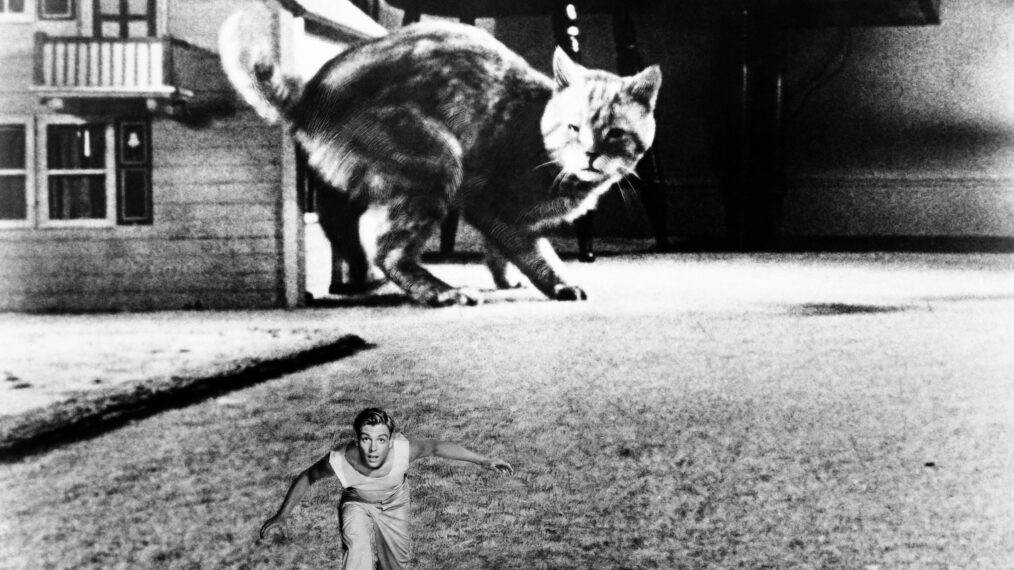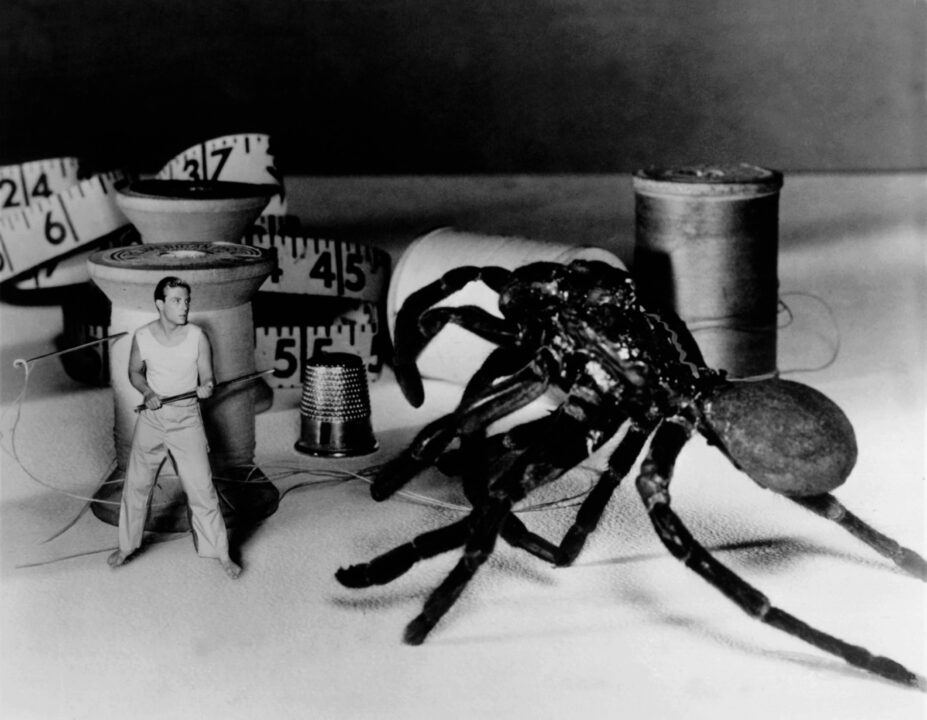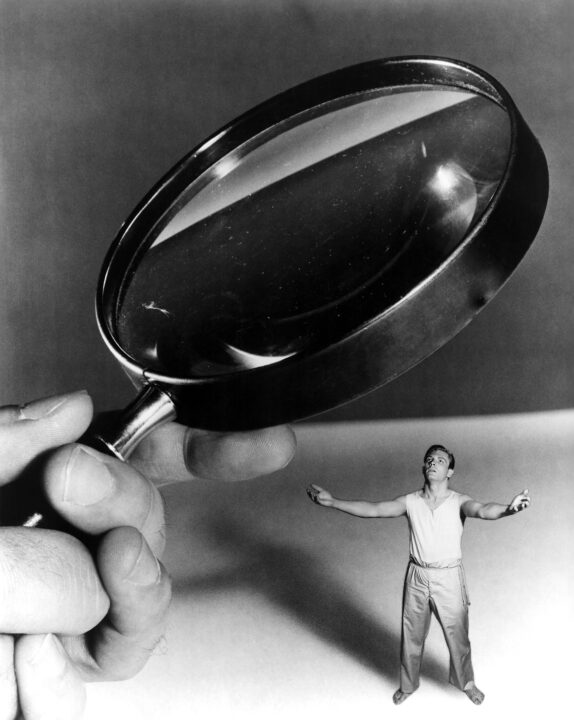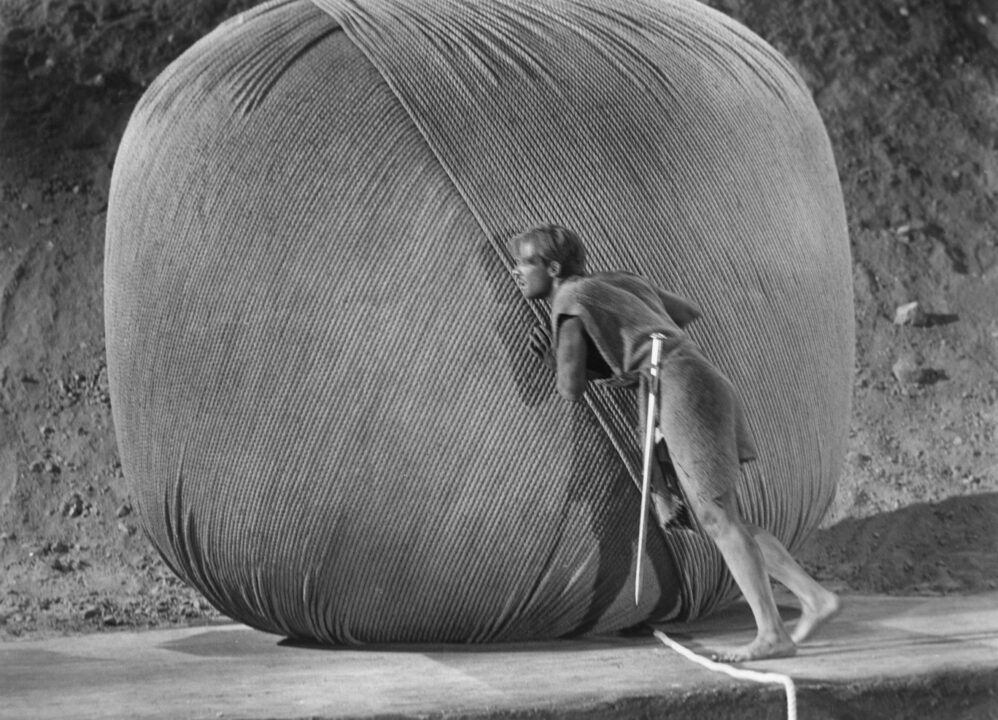5 Big Facts About ‘The Incredible Shrinking Man’

If life just feels too big lately, Svengoolie has the cure — 1957’s The Incredible Shrinking Man, which will air on the Saturday, Sept. 14, 2024, installment of his MeTV series, Svengoolie Classic Horror & Sci-Fi Movie. In this film, everyman Scott (Grant Williams) sails his small boat through a mysterious fog … which turns out to be radioactive. That, plus prior exposure to a pesticide, leave Scott shrinking smaller and smaller, until his own home becomes an impossible-to-navigate jungle filled with danger. Scott fights a giant spider, nearly washes away in a small drop of water, and eventually becomes so small he can crawl through the screen grating on a basement window.
But while that might sound wacky, this classic of ’50s sci-fi is more than just silly camp. Its script was written by sci-fi legend Richard Matheson, and according to the Criterion Channel, the movie “gazes with wonder and trepidation into the unknowable vastness of the cosmic void.” All that, AND there’s a showdown with a house cat! Read on to learn more about the biggest little movie that ever hit the drive-in.

THE INCREDIBLE SHRINKING MAN, Grant Williams, 1957 ISMN 035P(19153)
1. The Giant Tarantula Was A Sci-Fi Star (Maybe)
OK, I guess you can’t quite call her a star — she was only in two movies. But Tamara the tarantula, who was listed in press materials as one of the only trained tarantulas on Earth, was the star of another Arnold film: She was the title character of 1955’s Tarantula.
Or was she? Though the film’s publicists touted Tamara’s career as sci-fi royalty, Randy Stuart, who played Scott’s wife, claimed that the high temperatures emitted by the set’s lamps overheated the spiders, leading to the deaths of 24 tarantulas over the course of filming.
2. It Was Directed By One Of The Decade’s Greatest Sci-Fi Filmmakers
Even if you don’t know the name Jack Arnold, you know his work (or, you know his work if you have a fondness for films where flying saucers and swamp monsters play havoc with the lives of ordinary people). After a brief career in theater and learning the basics of filmmaking in the U.S. Army Signal Corps, Arnold began to produce socially conscious documentaries and was nominated for an Academy Award for his 1950 documentary about the Triangle Shirtwaist Fire.
But Arnold, who was a lifelong fan of sci-fi and fantasy literature, soon pivoted, and in quick succession created some of the most iconic sci-fi films of the decade. He directed It Came From Outer Space (1953), Creature From the Black Lagoon (1954), Tarantula (1955) and The Incredible Shrinking Man, which is considered his masterpiece.
After the sci-fi era peaked, Arnold directed Westerns, comedies and action films, none of which made the splash of his earlier movies. He was also a prolific TV director through the early ’80s. But when he died in 1995, he was remembered as the man who made over-the-top 1950s sci-fi a bit more thoughtful.

THE INCREDIBLE SHRINKING MAN, Grant Williams, 1957
3. You’ll Never Guess How They Made Those Giant Raindrops
Creating a world large enough to make a fully grown man appear to be mere inches tall was, obviously, a special effects challenge. Some of it was accomplished through trick photography — in Scott’s scenes with his wife, they were filmed separately, from different distances, with the final products spliced together. Other effects were accomplished by building enormous props and sets, like the enormous sewing needle Scott uses to fight the spider, and the dollhouse that Scott takes refuge in — it was built to extra-large specifications on the same Universal sound stage that had once housed the enormous sets for The Phantom of the Opera.
But in trying to depict giant drops of water, Arnold struggled — until he remembered that as a child, he had once found some condoms and, thinking they were balloons, filled them with water and tossed them. Inspired, Arnold had 100 condoms filled with water and had them arranged on a suspended treadmill, so that they would fall down onto in rhythm, like actual raindrops.
4. The Star Was Constantly Injured On Set
And if the previous anecdote inspired you to start pelting everything in sight with some “improvised” water balloons, think twice — because the film’s practical effects inflicted frequent injuries on star Grant Williams. In less than two weeks on set, Williams got blisters and scratches (including a deep one on his leg), and an eye irritation so bad, it required two separate trips to the hospital.

THE INCREDIBLE SHRINKING MAN, Grant Williams, 1957
5. Everyone Hated The Ending (Except The Filmmakers)
The Incredible Shrinking Man‘s ending is part of why it is now considered a classic: Scott, knowing he will keep shrinking until he dies, accepts his fate and is able to go on, confident in his knowledge that he will always be one of God’s children. As you might guess, the studio hated this ending. They wanted Scott to go back to normal size. Arnold and Matheson suggested a compromise: They’d show the original ending at the test screening, and let the audience decide.
Surprise! The audience’s comment cards said things like, “Should’ve had a different ending, should’ve grown again” and “What happened at the end?” Somehow, the filmmakers prevailed and kept their original ending.
Scott staying didn’t hurt the film at the box office — it was one of the most successful sci-fi films of the decade, out-earning Invasion of the Body Snatchers. And that’s no small thing!

Top 100 Sci-Fi Movies
July/August 2024
Everybody has their futuristic favorites, but which films really rank as the top classics of 20th century sci-fi?
Buy This Issue